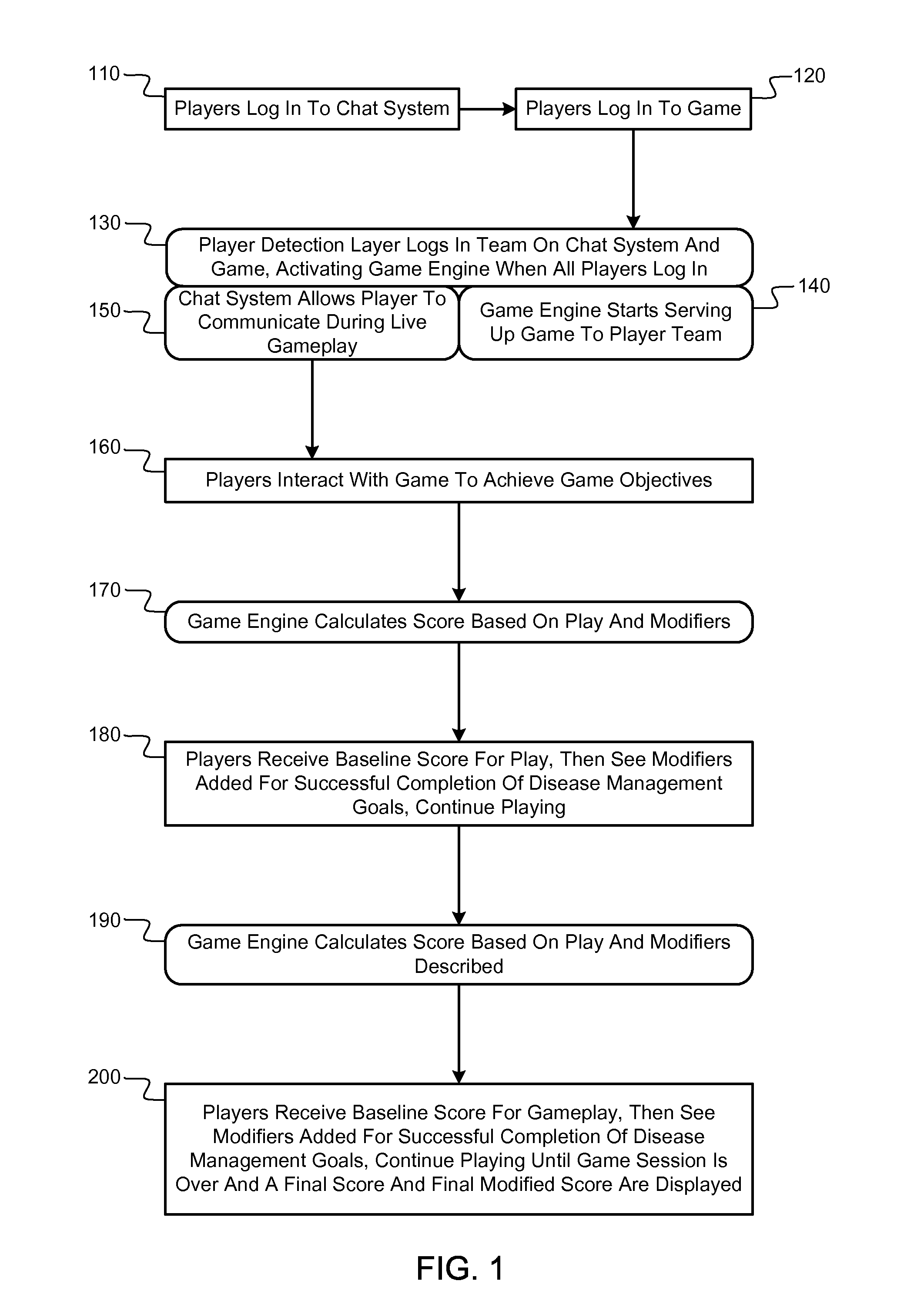Method for improving self-management of a disease
a self-management and disease technology, applied in the field of single and multiplayer computer games, can solve the problems of not reaching all patients, unable to adequately adhere to diabetes management programs, and the majority of diabetics to achieve self-management failures, achieve in-game and out-of-game rewards more quickly, and achieve long-term good health. , the effect of simple wining prizes
- Summary
- Abstract
- Description
- Claims
- Application Information
AI Technical Summary
Benefits of technology
Problems solved by technology
Method used
Image
Examples
Embodiment Construction
Operation
[0064]In the following detailed description of the invention, reference is made to the accompanying drawings which form a part hereof, and in which are shown, by way of illustration, specific embodiments in which the invention may be practiced. It is to be understood that other embodiments may be used, and structural changes may be made without departing from the scope of the present invention.
[0065]The preferred embodiment of the invention is a game that operates in a client-server environment. Data about a user, such as a diabetic or player or other player-patient, including both past play and data that has been inputted in previous playing sessions, is stored on central servers. A database program, such as Oracle or Microsoft SQL Server, holds data objects on the server side. A secure log in is required both to protect the privacy of the patient and also to make cheating more difficult. This log in can use a password, a biometric device such as a thumb print reader, an e...
PUM
 Login to View More
Login to View More Abstract
Description
Claims
Application Information
 Login to View More
Login to View More - R&D
- Intellectual Property
- Life Sciences
- Materials
- Tech Scout
- Unparalleled Data Quality
- Higher Quality Content
- 60% Fewer Hallucinations
Browse by: Latest US Patents, China's latest patents, Technical Efficacy Thesaurus, Application Domain, Technology Topic, Popular Technical Reports.
© 2025 PatSnap. All rights reserved.Legal|Privacy policy|Modern Slavery Act Transparency Statement|Sitemap|About US| Contact US: help@patsnap.com



